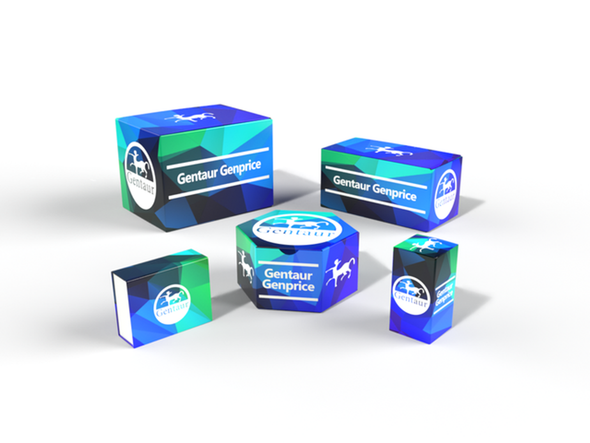Description
SEC14L2 Antibody | 58-273 | Gentaur UK, US & Europe Distribution
Host: Rabbit
Reactivity: Mouse
Homology: Predicted species reactivity based on immunogen sequence: Bovine, Rat
Immunogen: This SEC14L2 antibody is generated from rabbits immunized with a KLH conjugated synthetic peptide between 41-69 amino acids from the N-terminal region of human SEC14L2.
Research Area: Cell Cycle, Obesity, Signal Transduction
Tested Application: WB
Application: For WB starting dilution is: 1:1000
Specificiy: N/A
Positive Control 1: N/A
Positive Control 2: N/A
Positive Control 3: N/A
Positive Control 4: N/A
Positive Control 5: N/A
Positive Control 6: N/A
Molecular Weight: 46 kDa
Validation: N/A
Isoform: N/A
Purification: This antibody is purified through a protein A column, followed by peptide affinity purification.
Clonality: Polyclonal
Clone: N/A
Isotype: Rabbit Ig
Conjugate: Unconjugated
Physical State: Liquid
Buffer: Supplied in PBS with 0.09% (W/V) sodium azide.
Concentration: batch dependent
Storage Condition: Store at 4˚C for three months and -20˚C, stable for up to one year. As with all antibodies care should be taken to avoid repeated freeze thaw cycles. Antibodies should not be exposed to prolonged high temperatures.
Alternate Name: SEC14-like protein 2, Alpha-tocopherol-associated protein, TAP, hTAP, Squalene transfer protein, Supernatant protein factor, SPF, SEC14L2, C22orf6, KIAA1186, KIAA1658
User Note: Optimal dilutions for each application to be determined by the researcher.
BACKGROUND: This gene encodes a cytosolic protein which belongs to a family of lipid-binding proteins including Sec14p, alpha-tocopherol transfer protein, and cellular retinol-binding protein. The encoded protein stimulates squalene monooxygenase which is a downstream enzyme in the cholesterol biosynthetic pathway. Alternatively spliced transcript variants encoding different isoforms have been identified for this gene.






